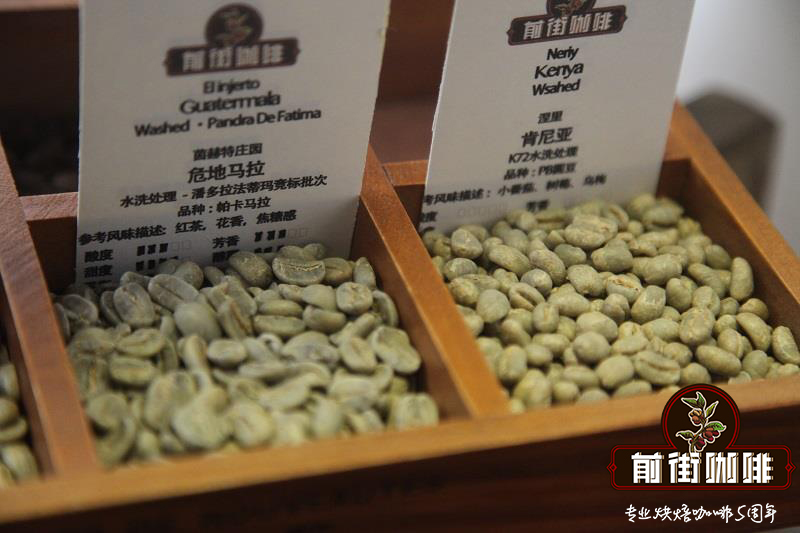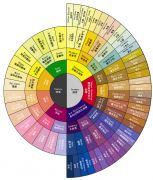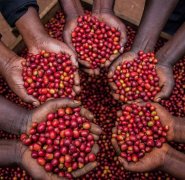Why is the harvest time of coffee so long? Which method is better, manual picking or mechanical harvesting?

How is the coffee harvested?
Coffee is processed in different ways. From seeds to cups, there are countless decisions and different ways of doing things. Only through careful experiments and research can coffee realize its true potential.
Coffee picking is the first step for ripe cherries to enter our cup. There are two ways to use them.
Selective harvest is only hand-picked ripe coffee cherries. Only ripe cherries are picked, while immature cherries are left on the tree and need to be reassessed a few weeks later. Repeat the process until all feasible coffees are picked.
This is a very labor-intensive method that requires pickers to be placed and baskets hung around the waist. The baskets are then emptied into larger collection bags, and at the end of the day, the harvest is dispersed and all foreign debris and overripe fruit are removed. Then, finally, weigh the cherries and split the payment.
This harvesting method has some advantages and can help produce coffee of as high quality as possible. Since only ripe fruits are picked, the reduction in the percentage of immaturity in harvested coffee leads to higher prices for producers. After picking coffee by hand, you can plant trees on steep hillsides, which can be easily manipulated by humans, but the machines are not so convenient, so that other land can be used for farming more efficiently.
However, since manual picking requires a lot of work, farms need a lot of labor, and they are willing to work at the lowest wage. Not only that, rising wages mean that producers cannot afford to hire so many people. This approach is also painful because the increase in the urban population means that the availability of rural labour is declining.
So what's the choice?
Peeling and harvesting is a place where all coffee fruits are mechanically removed from the tree at one time. This leads to harvests at different levels of maturity, but much more intensive and expensive.
There are three kinds of peeling methods. The first is manual peeling. This process involves the picker putting the canvas on the ground, grabbing the branches of the tree and pulling it out, picking all the fruit and putting it on the canvas. Then collect the coffee in a bag and weigh it, where you pay by weight or volume.
The second is mechanical stripping. This is very similar to manual stripping, but the picker gets some mechanical help. Pickers use a tool called derricadeiras, a mechanical stripper similar to Freddie Krueger's hand. The tool has a metal finger that knocks coffee onto the waiting canvas.
The third way to peel coffee is to use a mechanical harvester. Machines that first appeared in the 1970s use rotating and vibrating mallets to beat fruit into harvesters. By adjusting the speed of rotation and vibration as well as the speed of the whole machine, they can minimize the yield of immature cherries. Another technique is to remove the lower mallet from the machine at the beginning of the harvest, because the top of the tree tends to mature prematurely, and then go back to harvest the bottom of the tree when the tree is ripe. This method does require flat terrain to accommodate the machine.
Skinning harvests require less FAR labor, which means much faster than selective skinning. However, due to the low degree of specialization of harvesting, it will produce varying degrees of maturity, if they are not separated, it will lead to uneven drying, resulting in a decline in product quality. Not only that, more post-harvest techniques are needed to assess size and maturity, including pulpers and optical separators. In the end, as a result of harvesting a lot of immature fruit, these fruits are wasted, thus reducing the quality and quantity of the final product, which usually means a reduction in profits for producers.
Each harvest method has its obvious advantages and disadvantages, and as part of the planting process, growers must decide on the budget, the overall coffee quality required, the location and topography of the land, and the availability of the labour force. You can't really think that one method is better than another, and the method does vary from farm to farm.
Important Notice :
前街咖啡 FrontStreet Coffee has moved to new addredd:
FrontStreet Coffee Address: 315,Donghua East Road,GuangZhou
Tel:020 38364473
- Prev

How to taste Coffee Flavor understand Coffee Taste Wheel to improve Coffee Flavor sensitivity
First of all, you have to learn to distinguish between different boutique coffees that taste and smell different, so you have to drink two different kinds of coffee at the same time. Wait until you have a way to tell the similarities and differences between the two kinds of coffee, then learn the details of a single cup of coffee. You can do this in many ways, such as finding a coffee shop with a convenient distance and a variety of items.
- Next

Anaerobic Solar treatment of Coffee beans in Donkey Manor in Panama
How did a great cup of coffee, which is delicious, rich in layers, clear in acidity, full-bodied taste, repeatedly won awards in Best of Panama and broke cup testing records, be created? You may need a very good variety of coffee beans, you may need a piece of land and climate suitable for fine coffee, but more importantly, the person who makes it all beautiful-Lamastus.
Related
- Beginners will see the "Coffee pull flower" guide!
- What is the difference between ice blog purified milk and ordinary milk coffee?
- Why is the Philippines the largest producer of crops in Liberia?
- For coffee extraction, should the fine powder be retained?
- How does extracted espresso fill pressed powder? How much strength does it take to press the powder?
- How to make jasmine cold extract coffee? Is the jasmine + latte good?
- Will this little toy really make the coffee taste better? How does Lily Drip affect coffee extraction?
- Will the action of slapping the filter cup also affect coffee extraction?
- What's the difference between powder-to-water ratio and powder-to-liquid ratio?
- What is the Ethiopian local species? What does it have to do with Heirloom native species?

